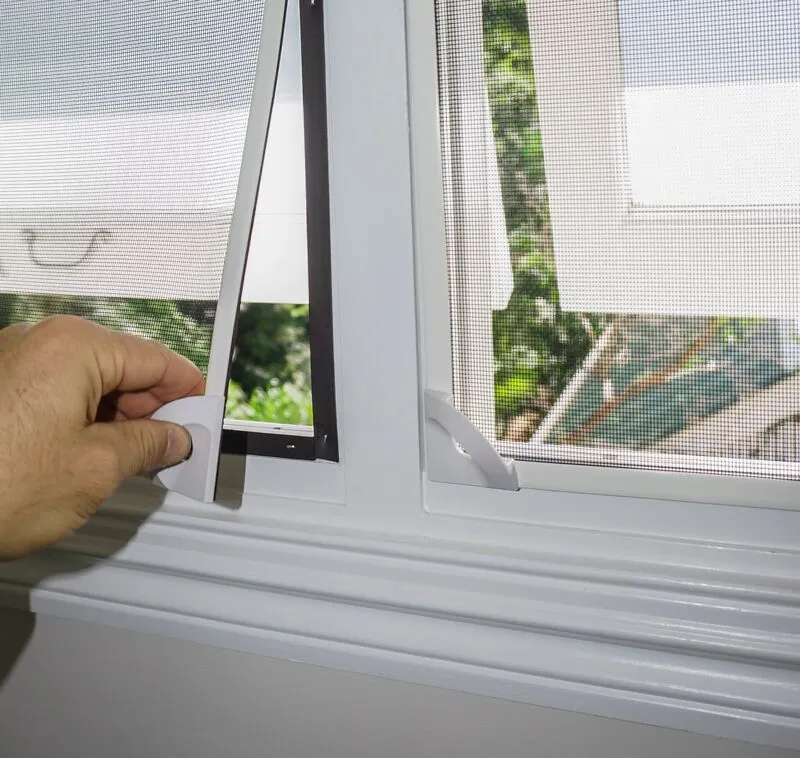Fly screens are a fantastic addition to any home, keeping pesky insects out while allowing fresh air in. But with so many options available, choosing the best fly screen for your needs can feel overwhelming.
Don’t worry, this guide will walk you through everything you need to know to make an informed decision.
Introduction
Fly screens are more than just a protective barrier; they enhance the comfort of your living space by letting in light and air while keeping bugs out.
Whether you’re upgrading your home or considering fly screens for the first time, this guide will help you understand how to choose the best fly screen for your needs.
Why Do You Need a Fly Screen?
Fly screens serve multiple purposes, from keeping insects out to improving ventilation.
They’re particularly essential in regions prone to mosquitoes and flies. Think of them as the unsung heroes of your home, much like a silent bodyguard ensuring your peace.

Types of Fly Screens
Understanding the different types of fly screens available is the first step in making the right choice.
Fixed Fly Screens
These are permanently attached to windows or doors. Ideal for spaces that don’t require frequent access.
Retractable Fly Screens
Retractable screens can be rolled away when not in use, making them a versatile option for patios and balconies.
Magnetic Fly Screens
Easy to install and remove, these are perfect for renters or temporary solutions.
Sliding Fly Screens
Designed for sliding doors, these screens move seamlessly along with your door.
Materials Used in Fly Screens
The material of the screen plays a big role in its effectiveness and durability.
Fiberglass Mesh
Popular for its affordability and resistance to rust and corrosion.
Aluminum Mesh
Durable and sleek but can be slightly more expensive.
Polyester Mesh
Flexible and UV-resistant, making it ideal for outdoor settings.
Stainless Steel Mesh
Highly durable and secure, often used in high-end or security screens.
Measuring for a Perfect Fit
Accurate measurements are crucial for a snug fit. Always measure twice—width, height, and depth. Even a millimeter off can make the difference between perfect protection and a gaping flaw.
Design and Aesthetic Considerations
Fly screens don’t have to be boring! Today, they come in various designs to complement your home’s decor. Choose frames that match your window trims and meshes that blend seamlessly with your view.
Ease of Installation
DIY enthusiasts will love magnetic or adhesive options, while more permanent solutions might require professional installation.
The key is to match the complexity of installation with your skills and time.
Durability and Maintenance
Fly screens endure the elements, so durability is a top concern. Choose corrosion-resistant materials and easy-to-clean designs.
Regular maintenance, like brushing off dust or occasional washing, extends their lifespan.
Additional Features to Look For
Modern fly screens come with bonus features like:
- Pet-Friendly Screens: Stronger mesh that resists claws.
- UV Protection: Protects your interiors from harsh sunlight.
- Anti-Allergen Properties: Keeps pollen and dust at bay.
Cost vs. Quality
While it’s tempting to opt for the cheapest option, investing in a quality fly screen pays off in the long run. Consider it a balance between affordability and durability.
Eco-Friendly Options
If you’re eco-conscious, look for screens made from recyclable materials or those designed to enhance energy efficiency by reducing the need for air conditioning.
Custom vs. Ready-Made Fly Screens
Custom Screens
Tailored to your exact measurements and needs but often pricier.
Ready-Made Screens
Affordable and convenient but might not fit perfectly.
Choosing a Reliable Vendor
Your vendor can make or break your fly screen experience. Look for reviews, recommendations, and warranties. A trustworthy provider ensures quality and support.
Common Mistakes to Avoid
- Skipping measurements.
- Overlooking the environment (e.g., choosing non-UV-resistant screens for sunny areas).
- Ignoring maintenance requirements.
Conclusion
Choosing the best fly screen is all about understanding your needs and preferences. By considering factors like material, type, and durability, you can make an informed decision that keeps your home comfortable and pest-free.
FAQs
1. How do I measure my windows for a fly screen?
Measure the width, height, and depth of the window frame to ensure a perfect fit.
2. Are retractable fly screens worth the investment?
Yes, they offer flexibility and can be tucked away when not in use.
3. Can I install a fly screen myself?
Yes, many options are DIY-friendly, but complex systems may require professional help.
4. What materials are best for high-durability fly screens?
Stainless steel and aluminum meshes are the most durable.
5. Do fly screens help with allergens?
Yes, some screens are designed to block pollen and other allergens, improving indoor air quality.
